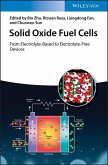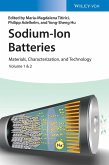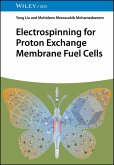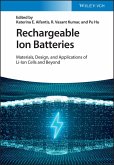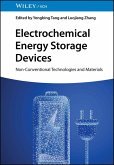Comprehensive reference exploring innovative auxiliary materials as a variety of battery components to enhance battery performance, safety, and longevity
Functional Auxiliary Materials in Batteries: Synthesis, Properties, and Applications overviews the latest research on the applications of organic functional materials and low-dimensional structural materials as functional auxiliary materials in batteries. The book introduces the properties and preparation methods of these materials, summarizes the application mechanisms and conclusions, and puts forward novel insights and prospects towards more sustainable and environmentally friendly battery technologies.
The first five chapters of this book expand around the application of organic functional materials in batteries, including separators, binders, electrolytes, and functional additives. The last two chapters of this book expand around the application of low-dimensional structural materials in batteries, including conductive agents and functional additives.
Functional Auxiliary Materials in Batteries includes information on:
Functional Auxiliary Materials in Batteries is an essential reference for new researchers seeking to quickly understand the progress of research in related fields. The book is also valuable for senior researchers seeking inspiration for innovation.
Functional Auxiliary Materials in Batteries: Synthesis, Properties, and Applications overviews the latest research on the applications of organic functional materials and low-dimensional structural materials as functional auxiliary materials in batteries. The book introduces the properties and preparation methods of these materials, summarizes the application mechanisms and conclusions, and puts forward novel insights and prospects towards more sustainable and environmentally friendly battery technologies.
The first five chapters of this book expand around the application of organic functional materials in batteries, including separators, binders, electrolytes, and functional additives. The last two chapters of this book expand around the application of low-dimensional structural materials in batteries, including conductive agents and functional additives.
Functional Auxiliary Materials in Batteries includes information on:
- Film forming, flame retardant, high voltage, and overcharge protection additives
- Adjusting factors in biopolymer materials such as molecular structure, composition, and morphology to precisely regulate and optimize battery performance
- Ionic liquids and single-ion conductors as a more secure and widely usable alternative to traditional organic electrolytes
- Self-healing materials, covering their positive effects on energy density, cost reduction, safety, and sustainability and their challenges including complexity and material compatibility
- Carbon-based materials that mitigate polysulfide shuttle effects and extend cycle life
Functional Auxiliary Materials in Batteries is an essential reference for new researchers seeking to quickly understand the progress of research in related fields. The book is also valuable for senior researchers seeking inspiration for innovation.
Dieser Download kann aus rechtlichen Gründen nur mit Rechnungsadresse in D ausgeliefert werden.




